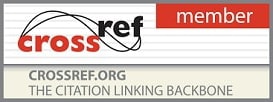P-ISSN: 2349-6800, E-ISSN: 2320-7078
Journal of Entomology and Zoology Studies
2017, Vol. 5, Issue 1
Household cockroaches of Quetta city as reservoir for infectious pathogenic bacteria
Sana Arif, Muhammad Kamran Taj, Kashif Kamran, Asim Iqbal, Imran Taj, Ghulam Mohammad, Kamran Hussain and Ashfaq Ahmed
This study makes an assessment on the role of cockroaches as potential carriers of pathogenic microorganisms. Current research is based on isolation, biochemical conformation and antimicrobial susceptibility tests. Totally, 191 household cockroaches were collected and identified as Blata orientalis, Blattella germanica and Periplaneta americana. A total of 10 Gram positive and negative species were isolated from their external surfaces and in the gastrointestinal tract. Percentage prevalence of contaminations for isolates were found higher in P. americana (35.6%) than B. orientalis (32%) and least in B. germanica (21.6%). The highest percentage of isolates was recorded in female (55.6%) then male (33.6%) cockroaches. The most abundant and common bacterial species belonged to Escherichia coli (80%), while Salmonella spp. (55%) was recoded as the least isolated specie. The ciprofloxacin and colistin sulphate antibiotics were recorded as most effective drugs against all isolates. The current finding of this study suggests that household cockroaches act as potential vector and reservoir of some important bacterial pathogens.
Pages : 649-653 | 1266 Views | 194 Downloads
How to cite this article:
Sana Arif, Muhammad Kamran Taj, Kashif Kamran, Asim Iqbal, Imran Taj, Ghulam Mohammad, Kamran Hussain, Ashfaq Ahmed. Household cockroaches of Quetta city as reservoir for infectious pathogenic bacteria. J Entomol Zool Stud 2017;5(1):649-653.
Related Journal Subscription
Important Publications Links
Important Links










